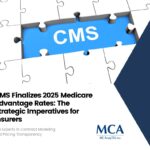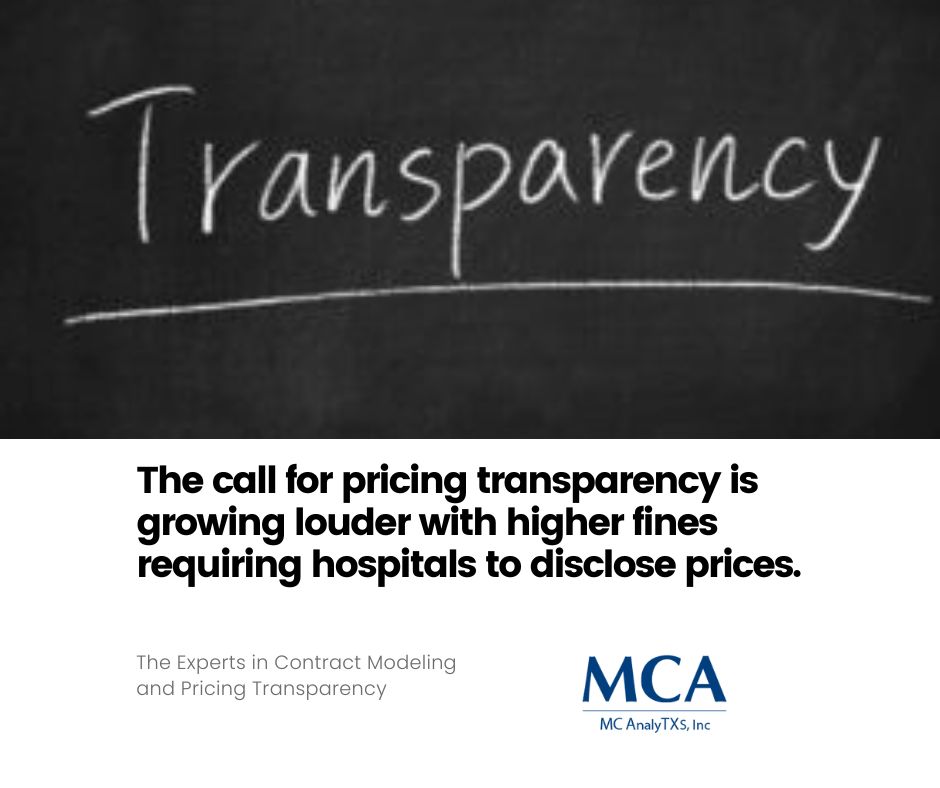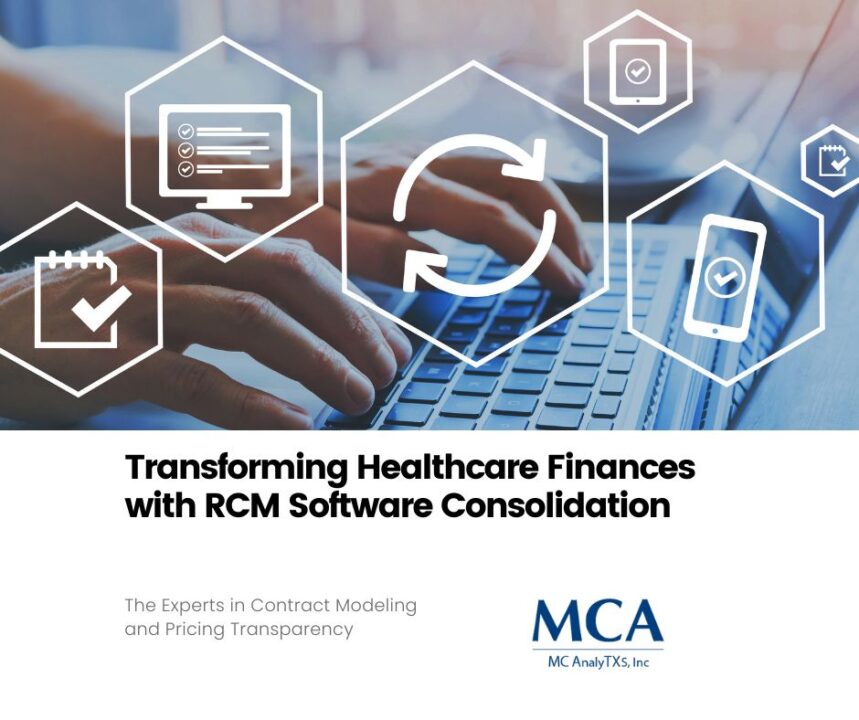
CMS Finalizes 2025 Medicare Advantage Rates: The Strategic Imperatives for Insurers
April 3, 2024
One Vendor for All Your RCM Needs
April 8, 2024The call for pricing transparency is growing louder with higher fines requiring hospitals to disclose prices.
Navigating the complex landscape of healthcare pricing and revenue cycle management has always been a priority for hospital administrators. However, a significant policy change has shifted the terrain, making transparency a non-negotiable component of financial operations for all healthcare facilities. This has profound implications for hospitals – both in terms of conformity to the law and the strategic opportunities it presents. Here’s a comprehensive look at what these changes mean for your institution and what steps you can take to not only comply but also thrive in this new paradigm.
The Policy Change
In a bid to empower patients with the information they need to make informed decisions about their healthcare, United States health authorities have enforced new regulations mandating hospitals to disclose their prices for surgeries, medical supplies, and prescriptions. These rules, set forth by the Centers for Medicare & Medicaid Services (CMS) and other governing bodies, not only stipulate when and where prices must be displayed but also impose substantial fines for non-compliance.
The Fine Print
Non-compliance with these regulations isn’t just a regulatory headache; it’s a financial one too. Fines are calculated per bed and are substantial. The largest hospitals, with hundreds of beds, could face daily penalties in the tens of thousands. This has compelled even the most reticent hospitals to quickly find a way to disclose their pricing information.
Impact on Hospitals
These changes herald a new era in healthcare finance, where transparency is a legal and financial mandate. Hospitals now find themselves needing to not only adjust their financial planning but also educate their patients about these published prices. The impact of these regulations reverberates through various domains.
Financial Reckoning
For CFOs and their teams, the task is monumental. The fines for non-disclosure are immediate and significant, prompting a scramble to integrate these requirements into hospital pricing strategies and revenue cycle management. The cost of compliance, too, is non-trivial, often involving significant technology upgrades and staff training.
Patient Experience and Trust
On the flip side, hospitals can use the occasion to build greater trust and deliver a more patient-focused service. Transparent prices can demystify the healthcare billing process. Educating patients on what these prices mean and how they interact with insurance can lead to a more positive experience and engender greater trust.
Strategies for Compliance
The most pressing question for administrators now is not whether to comply, but how. There are several strategies that hospitals can adopt to ensure they meet the new requirements without disrupting their existing operations.
Navigating the Maze
Understanding the full scope and reach of the new regulations is the first step. Hospitals need to audit their current pricing and disclosure systems to identify gaps and areas for improvement. They also need to stay abreast of any changes and updates, as this is a rapidly evolving area of policy.
Leveraging Technology
Incorporating the right technology is crucial. Price transparency tools can help hospitals not only meet the basic requirements but also provide dynamic pricing information that can be tailored to patient-specific circumstances. This technology doesn’t just enable compliance; it also enhances the user experience for patients, allowing them to access pricing information in a format that is more easily digestible.
Opportunities for Improvement
While compliance with these regulations is a significant challenge, it also presents opportunities for hospitals to rethink and enhance their financial strategies.
Optimizing Pricing
This is a good time for hospitals to review and possibly revise their pricing structures. They can use the data they gather on cost and price transparency to evaluate the competitiveness of their services in the marketplace and make adjustments that align with patient needs and financial sustainability.
Engaging with Community
Many hospitals are taking a proactive approach to discuss these changes and their implications with community members. Engaging with patients and local organizations can help hospitals better understand the needs of their community but also build goodwill and demonstrate a commitment to patient welfare.
Conclusion
For hospitals, it’s not just a matter of compliance; it’s about adapting to a new reality and finding ways to turn challenges into opportunities. By facing these changes head-on, institutions can reinforce their commitment to patients and build a stronger, more financially resilient healthcare system.
What’s clear is that the conversation around hospital prices and patient rights is not going away. It’s incumbent upon all hospitals to engage with this discussion and take ownership of their role in the broader healthcare ecosystem. Proactive engagement and a willingness to adapt will ensure compliance and lead to a more robust and responsive healthcare institution. The time to act is now, and the shared experience of the healthcare community is the key to unlocking the full potential of this new era in healthcare finance.
To learn more join our experts Thursday, April 18th at 1 pm CST.





